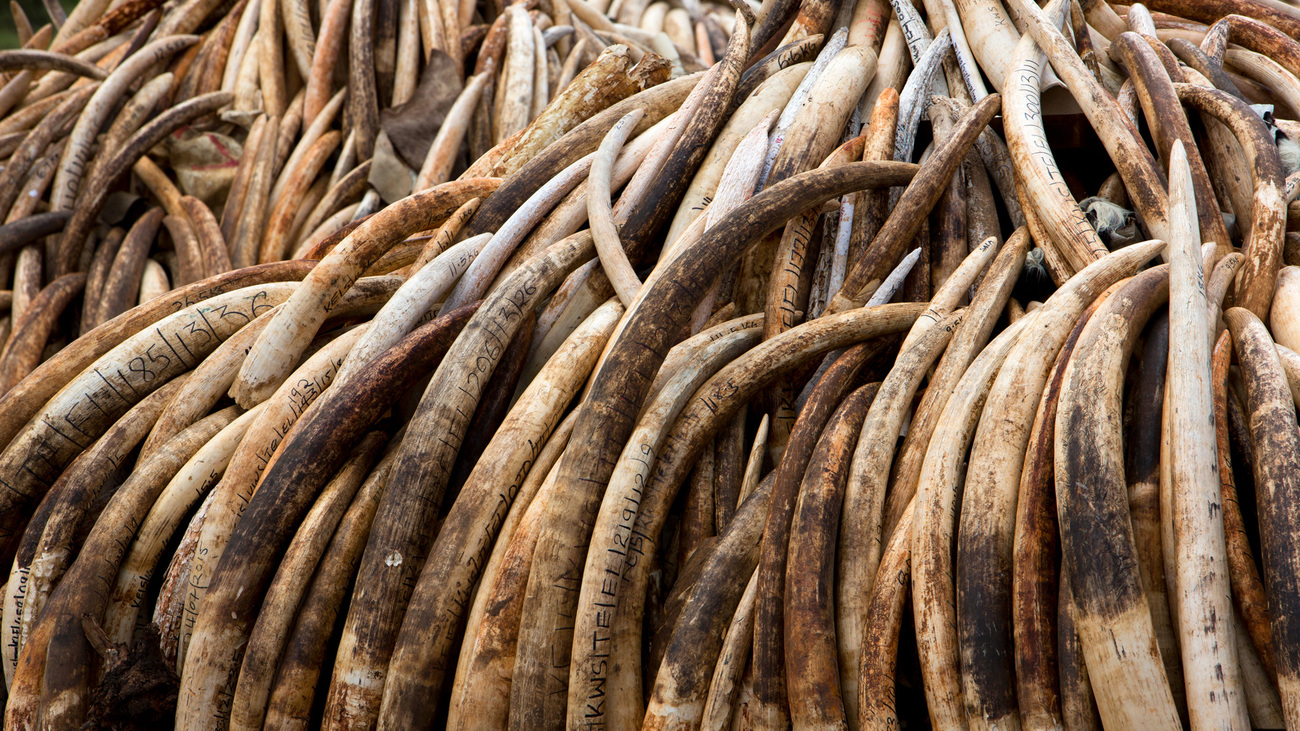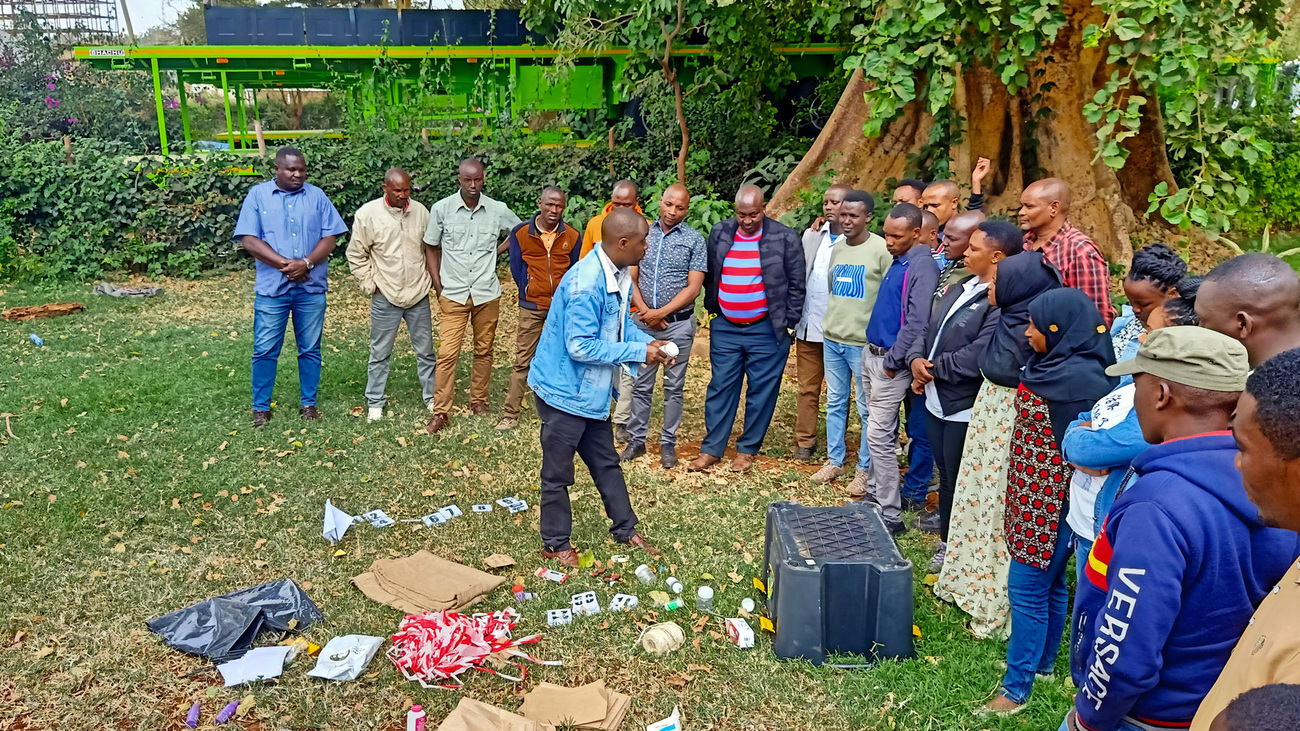Combatting illegal wildlife trade in Kenya and Tanzania
Improving the security of wildlife in Kenya and TanzaniaHow we’re tackling wildlife crime in East Africa
How we’re tackling wildlife crime in East Africa

By Edward Indakwa
Along the Kenya-Tanzania border, elephants, big cats, and other megafauna roam back and forth across the international boundary in search of mates, water, pasture, and prey along age-old routes.
While this boundary is a boon for biodiversity, it is also a conduit for poachers and wildlife traffickers who form part of a transnational illegal wildlife crime industry worth between US$7 billion and US$20 billion. This trade is, according to Interpol, the fourth-largest form of organized crime in the world, going ‘hand in glove with tax evasion, corruption, money laundering, and even murder, with organised crime groups using the same routes to smuggle protected wildlife as they do people, weapons, drugs, and other illegal products.’
IFAW’s East Africa wildlife crime analyst Jacqueline Bubi says bushmeat and wildlife products are usually trafficked in the region by car, motorcycle, or on foot across four border points in Kenya: Lunga Lunga in Kwale, Tarakea in Taveta, Loitoktok in Kajiado, and Isebania in Migori.
‘Raw and finished rhino horn and ivory, live pangolins, pangolin scales, and sandalwood are the most trafficked items across the two countries, mostly to markets in the Far East. Trafficking of venomous snakes and non-venomous reptiles for the illegal live pet trade in Europe is also common,’ she says.
To curb this criminal activity, IFAW, in collaboration with partners, spearheads training of Kenyan and Tanzanian law enforcement officials to detect wildlife species and products that are smuggled or trafficked within and across the two countries and to secure crime scenes. To date, 200 officers, including wildlife personnel from Uganda, Ethiopia, the Democratic Republic of Congo (DRC), Somaliland, and Djibouti, have benefited from training sessions funded by partners, including the Bureau of International Narcotics and Law Enforcement Affairs (INL) and USAID.
In addition to training, IFAW supplies the investigators and community rangers with equipment such as computers, mobile forensics tools and mobile phones, first aid and crime scene investigation kits, forensic gloves, and basic kits for collecting evidence.

Following the money
But IFAW’s Africa director James Isiche, formerly a Kenya Wildlife Service (KWS) assistant director for Tsavo Conservation Area, believes there is more to stopping illegal wildlife trade than arresting poachers and traffickers.
‘While we must do everything in our power to prevent poaching, we have to appreciate that illegal wildlife trade is often directly linked to organised crime syndicates,’ he says. ‘It takes a sophisticated network to move illegal wildlife products across the hinterland into containers at African seaports for transit to markets in Southeast Asia. To stop those who drive the process, we must scale up from the minor role-players who kill wildlife and follow the money to identify the big players who fund poaching and wildlife trafficking.’
IFAW is working to seal this gap by training KWS officers and wildlife crime investigators from the Tanzania Wildlife Management Authority (TAWA) and Tanzania National Parks Agency (TANAPA) in financial investigations and money laundering.
‘The only way to destroy these networks is to establish how money from the proceeds of wildlife crime is wired or laundered,’ says Bubi, who leads the IFAW team in the training sessions. Together with trainers from KWS, Kenya's Asset Recovery Agency, Financial Reporting Centre, United Nations Office on Drugs and Crime (UNODC), Basel Institute of Governance, and the African Wildlife Foundation, IFAW trains wildlife crime investigators to follow the money trail and connect the dots between the financier and the poacher.
The trainings involve exposure to anti-money laundering laws, finance investigation techniques, identifying suspicious financial transactions, and collaboration with state agencies such as Kenya’s Ethics and Anti-Corruption Commission (EACC), which has the capacity and expertise to unravel intricate financial crimes.
These training sessions have fostered a rapport between national wildlife agencies and forged personal friendships among senior wildlife crime investigators across East Africa, which is crucial in sharing information and responding quickly when cross-border crimes occur.

Law enforcement gaps
As part of the training program, Kenyan and Tanzanian rangers also conduct concurrent field patrols in their respective areas of authority along the international border. In one exercise conducted in February 2022 by 40 rangers from both countries, officials arrested 16 suspects, confiscated numerous snares, and recovered 200 kilograms of bushmeat, mainly zebra and dik-dik.
Law enforcement is an expensive undertaking. Park rangers, community game scouts, and patrol vehicles are needed in wildlife crime hotspots like the Kenya-Tanzania border to deter poaching, fight wildlife crimes, and keep animals alive. This poses a massive challenge for under-resourced conservation agencies.
‘The decline of key wildlife species due to poaching and other forms of wildlife crime is a universal concern that requires the attention and concerted efforts between governments, the private sector, and non-profit institutions,’ says Isiche.
Related content
Every problem has a solution, every solution needs support.
The problems we face are urgent, complicated, and resistant to change. Real solutions demand creativity, hard work and involvement from people like you.